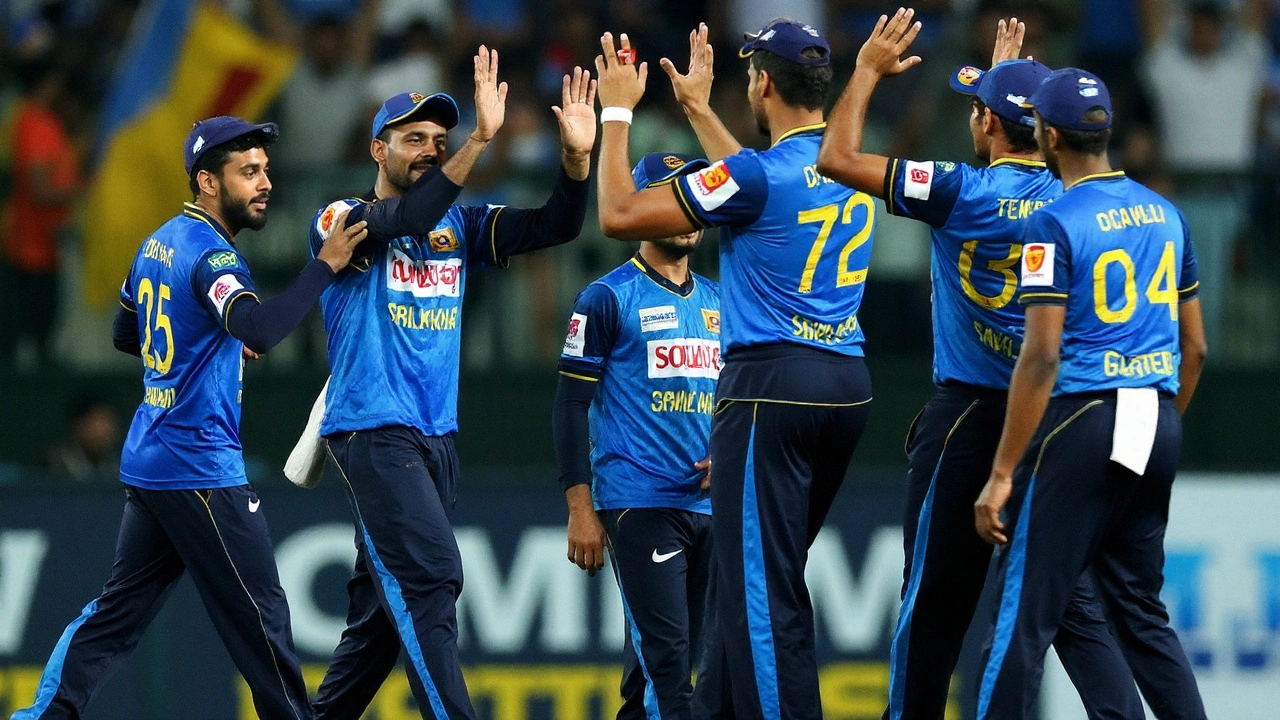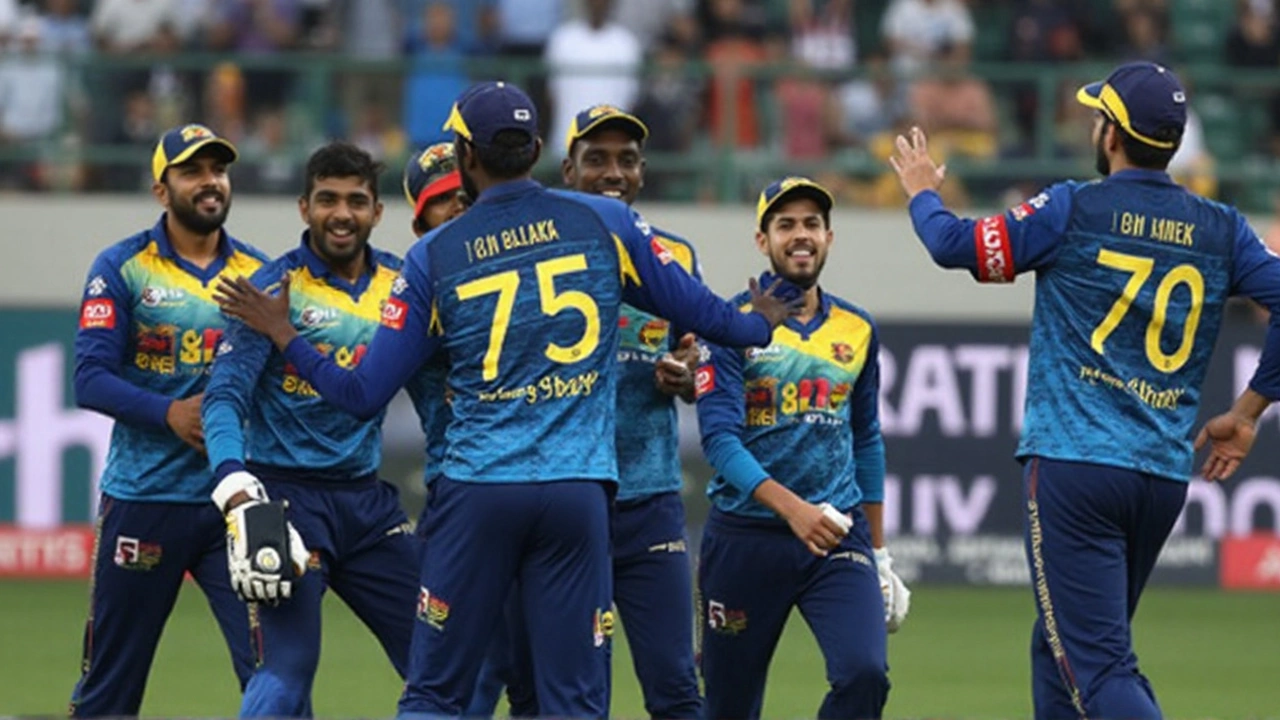
Asalanka takes charge as Sri Lanka load up for a testing New Zealand tour
Sri Lanka have put a fresh face at the helm for a demanding away assignment, naming Charith Asalanka as captain for the ODI leg of their January 2025 tour of New Zealand. The move puts a composed middle-order batter in charge of a group that blends proven performers with hungry newcomers. It’s a straight statement of intent: reset the white-ball plans, test depth, and toughen up in conditions that have historically exposed visiting teams.
The three ODIs are scheduled for January 5, 8, and 11, across Wellington, Hamilton, and Auckland. The first game starts at 03:30 AM IST, the next two at 06:30 AM IST—unfriendly hours for fans back home, but prime time for an audit of roles and resilience. Sri Lanka’s last few tours of New Zealand were hard going, and that memory will sit alongside the optimism of a new captain and the return of a key match-winner.
The headline pick is Wanindu Hasaranga’s return to the ODI fold. He’s the side’s impact card—capable of switching on a game in a handful of overs with the ball and swinging the bat down the order. He’s joined by Maheesh Theekshana, Sri Lanka’s banker for control in the powerplay and stability in the middle overs. With both available, the spin department suddenly looks versatile and aggressive.
The batting core looks familiar: Pathum Nissanka up top for tempo and timing, Avishka Fernando for intent, and Kusal Mendis to steady or accelerate depending on the script. Asalanka slots into the middle, where he’s built a reputation for closing out chases and absorbing pressure. Around them, Kamindu Mendis and Janith Liyanage offer options to lengthen the batting without losing bowling flexibility.
The debut watch is real too. Eshan Malinga’s selection is a nod to domestic form and raw pace, while Chamidu Wickramasinghe’s inclusion points to succession planning in the seam department. Nishan Madushka adds a second wicketkeeping option and an extra top-order bat. Nuwanidu Fernando, a clean striker who can open or float, gives the think-tank cover for different conditions.
Here’s the full Sri Lanka ODI squad named for the tour:
- Charith Asalanka (captain)
- Pathum Nissanka
- Avishka Fernando
- Kusal Mendis
- Kamindu Mendis
- Nishan Madushka
- Janith Liyanage
- Nuwanidu Fernando
- Wanindu Hasaranga
- Maheesh Theekshana
- Jeffrey Vandersay
- Dunith Wellalage
- Asitha Fernando
- Lahiru Kumara
- Mohamed Shiraz
- Eshan Malinga
- Chamidu Wickramasinghe
Bowling-wise, the quicks will have the new ball in their favor. Asitha Fernando and Lahiru Kumara lead the seam unit, with Mohamed Shiraz in the mix. Kumara’s heavy lengths can be nasty in Hamilton and Auckland, while Asitha’s seam movement and discipline suit Wellington’s wind and grass. Wickramasinghe offers fresh legs and a hit-the-deck angle, while Malinga’s selection suggests Sri Lanka want to test raw pace under the toughest lights.
Spin options are as rich as they’ve been in a while. Hasaranga’s attacking lines pair nicely with Theekshana’s calm economy. Dunith Wellalage, the all-rounder, gives the XI balance: he can bowl tight spells and bat at seven or eight without robbing the side of stability. Jeffrey Vandersay, the leg-spinner, adds variety in case the surfaces grip late or the coaches want a specialist wrist-spin option alongside Hasaranga.
Asalanka’s captaincy is a notable shift. He has been the glue in the middle overs with the bat—measured when the ball is swinging, free when the rate demands. As captain, his instinct for tempo will be tested by New Zealand’s habit of squeezing in the middle phase. Expect him to lean on Mendis for leadership in the field and on Hasaranga for tactical calls when the ball gets soft and the innings drifts.
The batting order will likely shuffle based on starts. If Nissanka and Avishka lock in, Sri Lanka can hold Mendis back to control overs 20–35, freeing Asalanka to finish. If there’s early trouble, the middle will need to blunt the new ball and push the game deep. In Auckland, the short straight boundaries can tempt a promotion for a power-hitter; in Wellington, they may opt for caution early and cash out late.

Schedule, venues, and the selection logic behind them
The venues are as different as they come in New Zealand. Wellington can be windy and green with swing on offer, especially for morning starts. Seddon Park in Hamilton is usually truer and rewards strokeplay once the first 10 overs fade. Eden Park in Auckland is a quirk—short, straight boundaries and a fast outfield. Teams that hold their shape and hit the V often outscore those who slog square.
That backdrop explains the squad’s balance. Sri Lanka have four spinners, but they won’t be afraid to play just one specialist spinner if the pitch is fresh and the air heavy. On batting depth, the selectors clearly want flexibility: Madushka if they want a top-line keeper-bat, Liyanage and Kamindu to stretch the order without giving up bowling options, and Nuwanidu as a plug-and-play opener in case of injury or form dips.
The seam unit will decide the series more than anything. Early wickets are non-negotiable in New Zealand, and control in overs 11–30 is where Sri Lanka have often fallen behind on past tours. That’s where Theekshana’s economy and Hasaranga’s threat come in. If the seamers can take two up top and hold a line at the death, Sri Lanka’s batting—on paper—has enough to post or chase competitive totals.
There’s also the broader picture. This trip is not just about three ODIs; it’s about calibrating roles for a busy 2025. Workload management, fielding sharpness, and death-overs clarity have all been problem areas at different points. New Zealand is a stress test for all three. Expect Sri Lanka to rotate quicks across the matches and try combinations that pair a hit-the-deck seamer with a control bowler, while keeping one of Hasaranga or Wellalage fresh for the third game.
The likely shapes of an XI are clear. If conditions scream seam, Sri Lanka could go with two frontline quicks plus a third seamer-allrounder, Theekshana for control, and Hasaranga to attack in the middle. If the pitch is flat, a batting-heavy XI with Wellalage at seven could keep batting till nine without sacrificing wicket-taking spin. That allows freedom up top for Nissanka and Avishka to play their natural game.
Form and familiarity matter too. Mendis’s experience against the moving ball is crucial. Asalanka’s left-handed angle disrupts match-ups. Kamindu’s ability to bat anywhere from four to seven gives the think-tank a plug to fill if they need a right-left mix or a finisher with game sense. Liyanage, who has carved out runs in domestic cricket, offers a middle-order option that can rotate strike and finish overs neatly.
For the newcomers, the brief is simple: bring energy, field like your place depends on it, and trust your strengths. New Zealand away can be unforgiving, but it can also fast-track careers for players who adapt quickly to pace and bounce. If Malinga or Wickramasinghe find rhythm early, Sri Lanka suddenly have a different look with the ball—one that bothers batters even when the shine is gone.
All told, this squad feels like a clean attempt at clarity. A young captain with a cool head, a spin unit with bite, seamers who can hit hard lengths, and a top order that knows its roles. The fixtures—Wellington on January 5 (03:30 AM IST), Hamilton on January 8 (06:30 AM IST), and Auckland on January 11 (06:30 AM IST)—will reveal where the plan holds and where it frays. For Sri Lanka, there’s no better place to find out than New Zealand, where the margin for error is thin and the lessons stick.